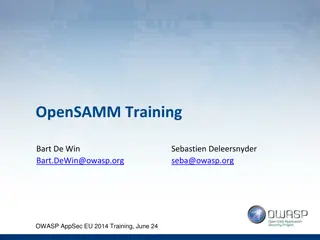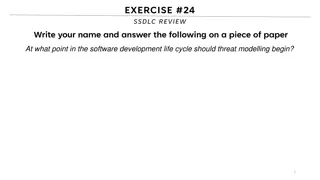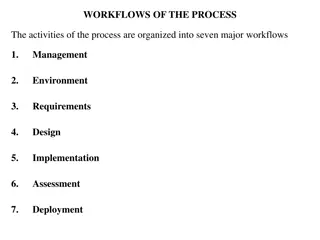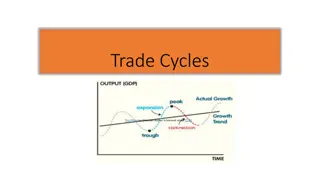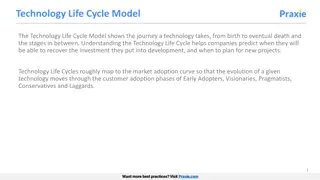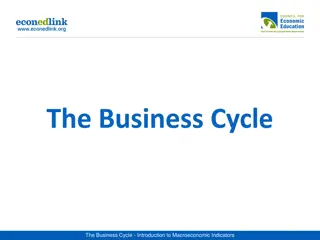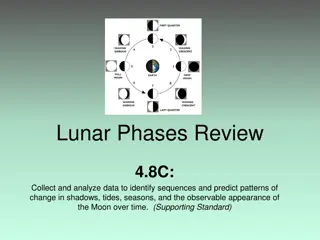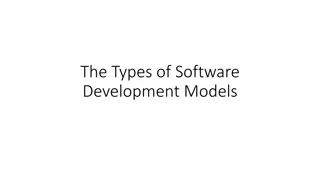Understanding Software Development Life Cycle (SDLC) Phases
Software Development Life Cycle (SDLC) is a process in the software industry used to produce high-quality software efficiently. The SDLC consists of phases like Planning, Analysis, Design, Build, Test, and Deployment. Each phase is crucial for developing, maintaining, and enhancing software projects, ensuring they meet quality standards and are cost-effective.
Download Presentation

Please find below an Image/Link to download the presentation.
The content on the website is provided AS IS for your information and personal use only. It may not be sold, licensed, or shared on other websites without obtaining consent from the author. Download presentation by click this link. If you encounter any issues during the download, it is possible that the publisher has removed the file from their server.
E N D
Presentation Transcript
Learning Objectives Software Development Life Cycle (SDLC)? SDLC phases: Planning Analysis Design Build Test Deployment SDLC Models
SOFTWARE DEVELOPMENT LIFE CYCLE (SDLC)
What is Software Development Life Cycle (SDLC)? SDLC (Software Development Life Cycle): is a process used in the software industry to produce software with the highest quality and lowest cost in the shortest time. SDLC consists of multiple phases describing how to develop, maintain, replace and alter or enhance the software.
SDLC Phases Analysis Planning Design SDLC Deployment Build Test
Planning Phase Input: Client proposal or requirements. Requirement analysis is the most important and fundamental phase in SDLC. It is performed by the senior members of the team with inputs from the customer, the sales department, market surveys and domain experts in the industry. This information is then used to plan the basic project approach and to conduct product feasibility study in the economical, operational and technical areas. Planning for the quality assurance requirements and identification of the risks associated with the project is also done in the planning stage. The outcome of the technical feasibility study is to define the various technical approaches that can be followed to implement the project successfully with minimum risks. Output: Technical Feasibility Study/Project initiation.
Analysis Phase Input: Technical feasibility study and funding. Project analysis: Once the requirement analysis is done the next phase is to clearly define and document the product requirements and get them approved from the customer or the market analysts. This is done through an SRS (Software Requirement Specification) document which consists of all the product requirements to be designed and developed during the project life cycle. Output: SRS (Software Requirement Specification)
Design Phase Input: SRS (Software Requirement Specification). Project design: Based on the requirements specified in SRS, usually more than one design approach for the product architecture is proposed and documented in a DDS - Design Document Specification. This DDS is reviewed by all the important stakeholders and based on various parameters as risk assessment, product robustness, design modularity, budget and time constraints, the best design approach is selected for the product. A design approach clearly defines all the architectural modules of the product along with its communication and data flow representation with the external and third party modules (if any). The internal design of all the modules of the proposed architecture should be clearly defined with the minutest of the details in DDS. Based on the DDS, the internal design documents High level design (HLD) and Detail design (DDD) documents can be created. Output: HLD and/or DDD (Sometimes, DDD may be developed by the developers).
Build Phase Input: DDD (Detail Design Document). In this phase of SDLC the actual development starts and the product is built. The programming code is generated as per DDD (Detail Design Document) during this phase. If the design is performed in a detailed and organized manner, code generation can be accomplished without much hassle. Developers must follow the coding guidelines defined by their organization and programming tools like compilers, interpreters, debuggers, etc. are used to generate the code. Output: Program/software.
Test Phase Input: Un-tested program/software, Test plan document. This phase refers to the testing only stage of the product where product defects are reported, tracked, fixed and retested, until the product reaches the quality standards defined in the SRS. Output: tested program/software.
Deployment Phase Input: Tested program/software, migration plan. Once the product is tested and ready to be deployed it is released formally in the appropriate market. Sometimes product deployment happens in stages as per the business strategy of that organization. The product may first be released in a limited segment and tested in the real business environment (UAT - User acceptance testing). Then based on the feedback, the product may be released as it is or with suggested enhancements in the targeting market segment. After the product is released in the market, its maintenance is done for the existing customer base. Output: Tested program/software migrated into production, and celebrate.
Software Development Models Following are the most important and popular SD models: Waterfall Model (SDLC model) is the oldest and most straightforward. With this methodology, we finish one phase and then start the next. Each phase has its own mini-plan and each phase waterfalls into the next. The biggest drawback of this model is that small details left incomplete can hold up the entire process. Agile Model.The Agile SD model separates the product into cycles and delivers a working product very quickly. This methodology produces a succession of releases. Testing of each release feeds back info that s incorporated into the next version.According to Robert Half, the drawback of this model is that the heavy emphasis on customer interaction can lead the project in the wrong direction in some cases.
SDLC Models Iterative Model.This SDLC model emphasizes repetition. Developers create a version very quickly and for relatively little cost, then test and improve it through rapid and successive versions. One big disadvantage here is that it can eat up resources fast if left unchecked. V-Shaped Model.An extension of the waterfall model, this SDLC methodology tests at each stage of development. As with waterfall, this process can run into roadblocks. Big Bang Model.This high-risk SDLC model throws most of its resources at development and works best for small projects. It lacks the thorough requirements definition stage of the other methods. Spiral Model.The most flexible of the SDLC models, the spiral model is similar to the iterative model in its emphasis on repetition. The spiral model goes through the planning, design, build and test phases over and over, with gradual improvements at each pass. Other related methodologies are RAD Model, Rapid Application Development and Prototyping Models.
Waterfall Model Planning Analysis Design Build Test Waterfall Model Deployment
Agile Model Backlog Plan Plan Plan Test Test Build Build Test Build Iteration 1 Iteration 2 Iteration n Software due date
References https://www.tutorialspoint.com/sdlc/index.htm


